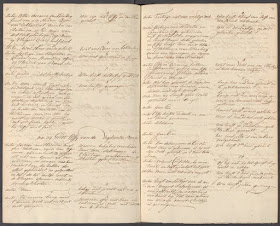Marjoleine Kars
New York: The New Press
2020
This years Cundill Prize has this surprise nomination. A book based on primary sources and one that by and large eschews the sordid pieties of identity politics and ideological posturing. Based on archival material found in the Hague and London, this book deals with the Slave Revolt in 1763 that convulsed the Dutch plantation of Berbice in South America. The entire narrative is derived from the Judicial proceedings instituted against the rebels who were captured after the rebellion had been militarily suppressed.
Extracting historically accurate information from evidence that was generated during the course of a highly charged trial in which the witnesses were facing charges that could lead to the imposition of the death penalty, is a challenging task in that the "re-enslaved had every incentive to lie distort and omit". The Slave who rebelled and risked his life for freedom from enslavement oppression and systemic violence according to the author was scripting his own history by acting out a praxis of negation of his existing social and political reality and striving to recreate an alternate society whose inchoate shape and contour is only fleetingly captured by the sources of the period. Dr Kars has situated the Slave Revolt in a framework that is partly Historical and partly Anthropological and thus a thick description of the events from a Geertzian perspective.
The records are all imperial records, regnant with the implied superiority of white rule and the illegitimacy of the cause of the rebels. The right to use extreme was assumed to be beyond debate and the testimonies gathered in large folios like the one illustrated below contain the records of over 900 witnesses. The rebels could not speak Dutch and
so their statements had to be translated by an interpreter who in turn made sense of the statement and conveyed the meaning in contemporary Dutch. This double translation affords opportunities for mistranslation and error. Ranajit Guha has drawn attention to this feature of Official Records in his pioneering paper, "The Prose of Counter Insurgency".
The Slave Revolt began in April 1763 and lasted a whole year. The slow communication across the Atlantic Ocean and the absence of adequate military support resulted in an early collapse of the Dutch Administration headed by a young Governor Simon van Hoogenheim. The military contingent sent from Netherlands reached Surimane only in April 1764 and with the arrival of nearly 1000 well trained and armed soldiers, the Rebellion was all but over. Unlike the English East India Company which possessed a strong army, the Dutch Company did not have its own dedicated military and essentially outsourced defence and protection to mercenaries. The rule of trading companies like the VOC and the EIC which were both in transoceanic commerce and slaving required a reliable supply of armed men capable of inflicting extreme violence and in the post Hapsburg Low Countries, violence was privatized to maximize profit.
The Rebellion began in the with the rather ironic name, Goed Land Goed Fortun or Good Land and Good Fortune Plantation owned by Laurens Kunker and the rebel leader Cojii or Kofi was enslaved on that Plantation. The Slaves had a number of grievances but the most important was their extreme anguish at the horrific punishments meted out to them by their Bomba and the Plantation Manager. The Plantation economy rested on a foundation of racial violence and fear that it engendered. Like Conrad's character, Kurtz in the Heart of Darkness the plantations all over the Atlantic world were populated by men driven by lust, power and an insatiable appetite for violence. It is no wonder then that the first thing that the rebels did was to murder the Planters, their families and in some cases the loyal slaves and the bomba.
The author is particularly good in teasing out strands of ideology and motives from the garbled accounts of the Rebellion provided by the rebels during their trial. The leadership for the movement was provided by the Amina a group of elite Africans from the Gold Coast. Coiiji and his "general" Accara were both from this ethnic group and so too was Atta, the man who deposed Coiiji and drove him to suicide. The leaders seem to have replicated the hierarchy on the Plantation while the overall ideological matrix was derived from West Africa. After the suicide of the rebel leader, nearly 5 human beings were killed so that their blood could by spread on the grave. By situating the events of the rebellion in a cultural context, the author has provided us insight into rebel culture and behaviour.
The Rebellion was crushed as the Dutch were able to muster a much larger force against the Rebels and also because the Amerindian tribes supported the colonial administration by cutting off all routes of escape. Does this make the indigenous people an accomplice of the enslavers. This question, a troubling one, confronts the reader. The author leaves us with little doubt about what she thinks. But we have to see the collaboration of Amerindians in colonial anti slave insurgency in the context of what they experienced at the hands of the Spanish, the Portuguese, the Dutch, the English and the French.
I enjoyed reading this book and though it is not in the same league as The Black Jacobins by C L R James it is an important contribution.



No comments:
Post a Comment